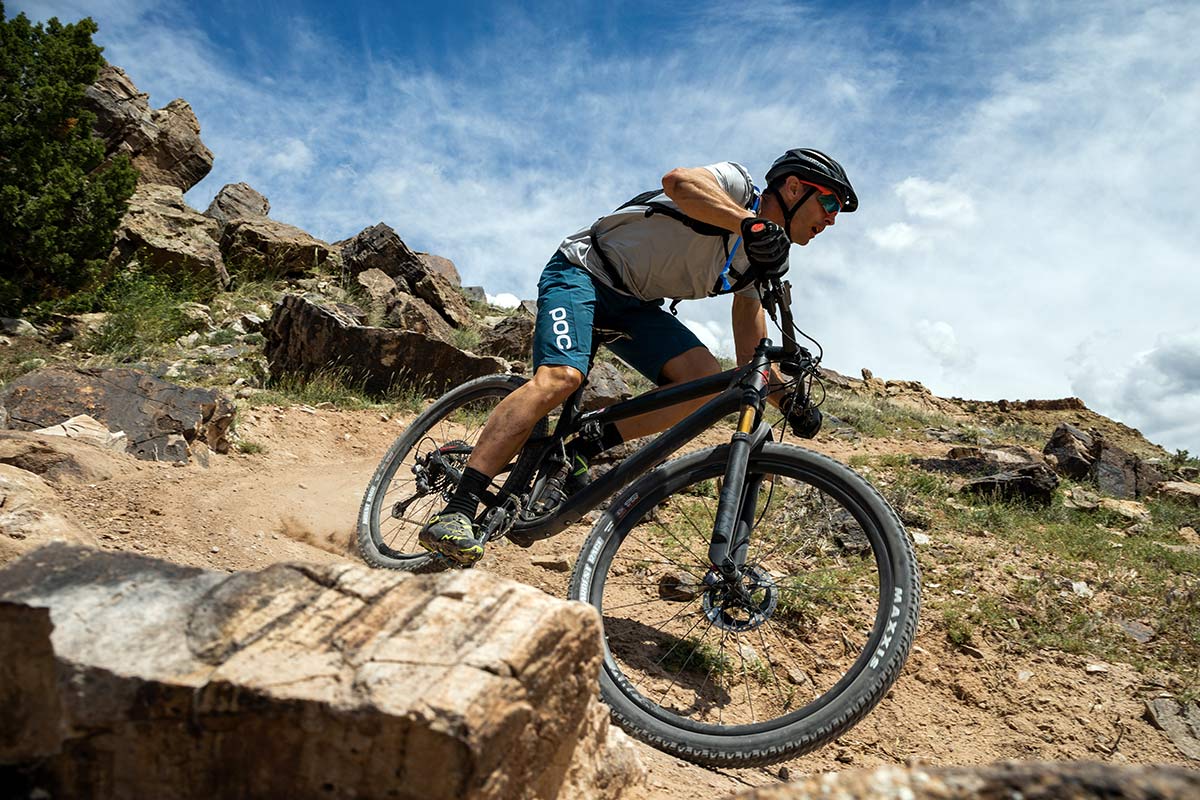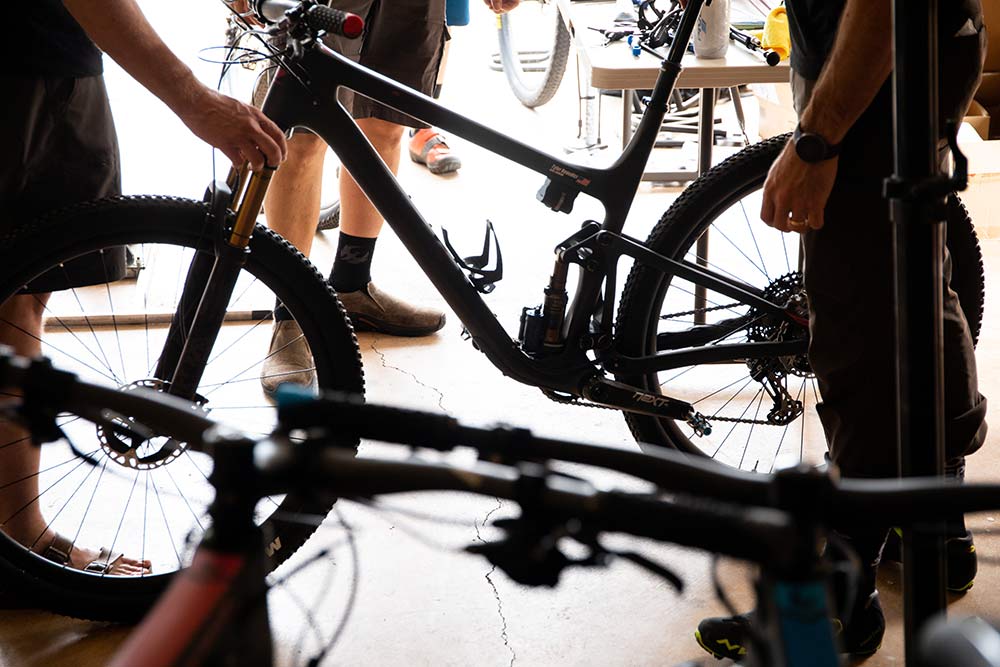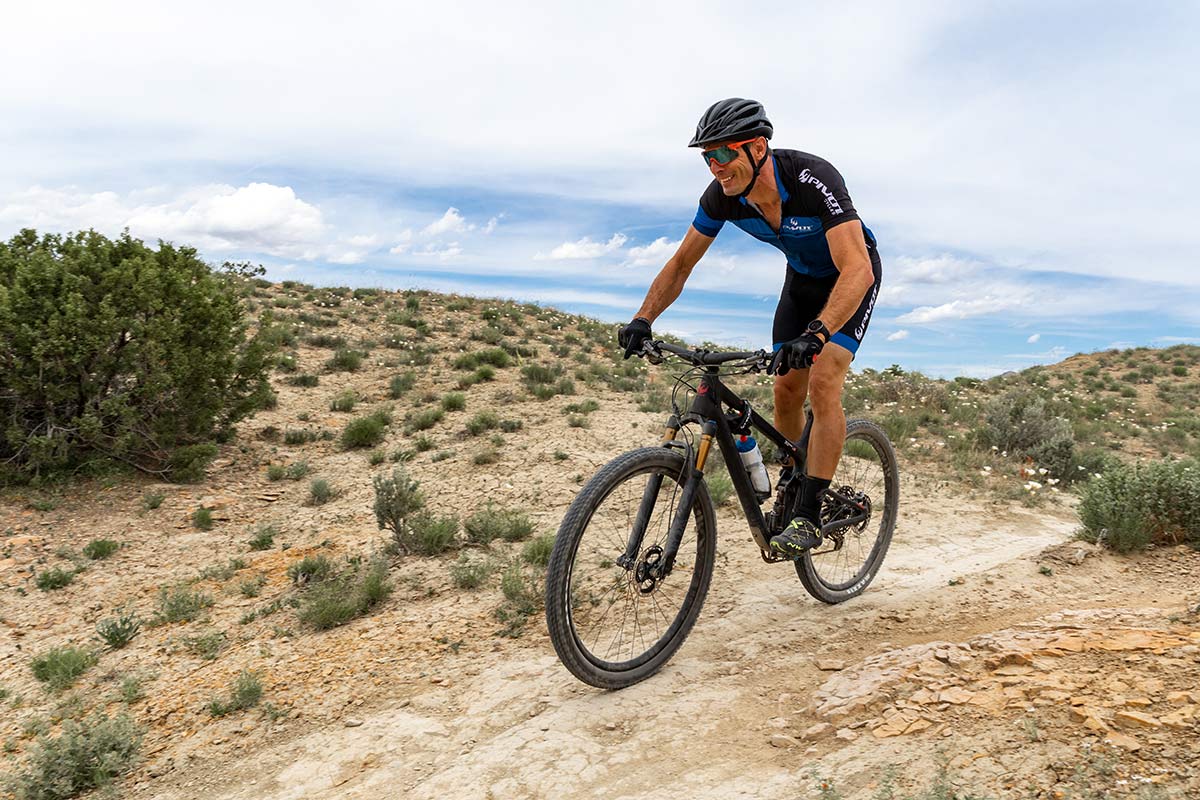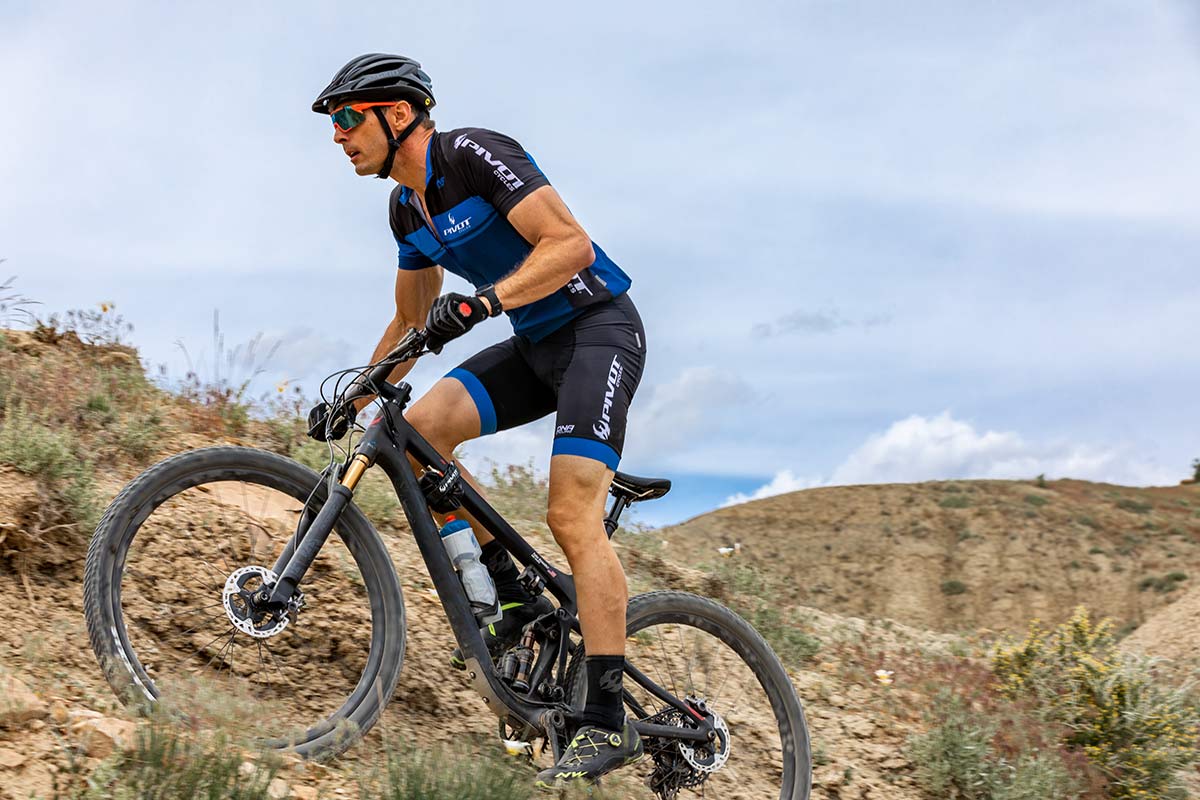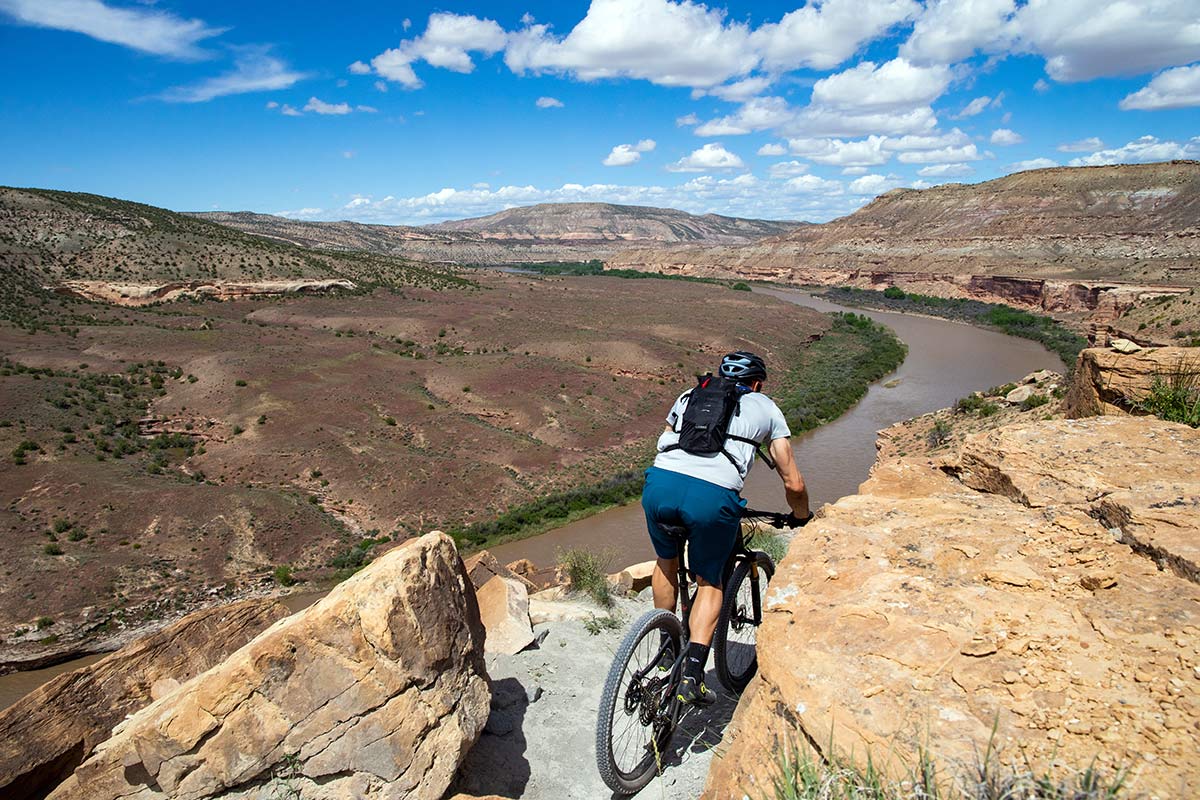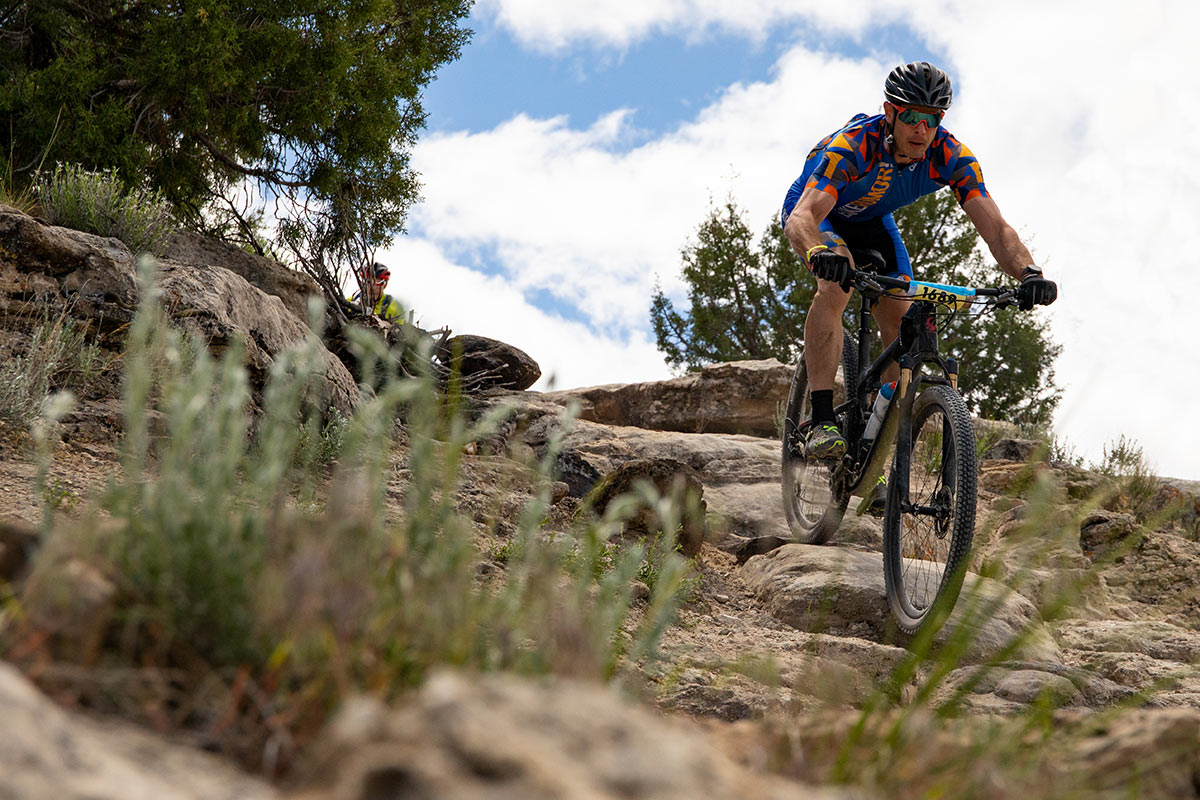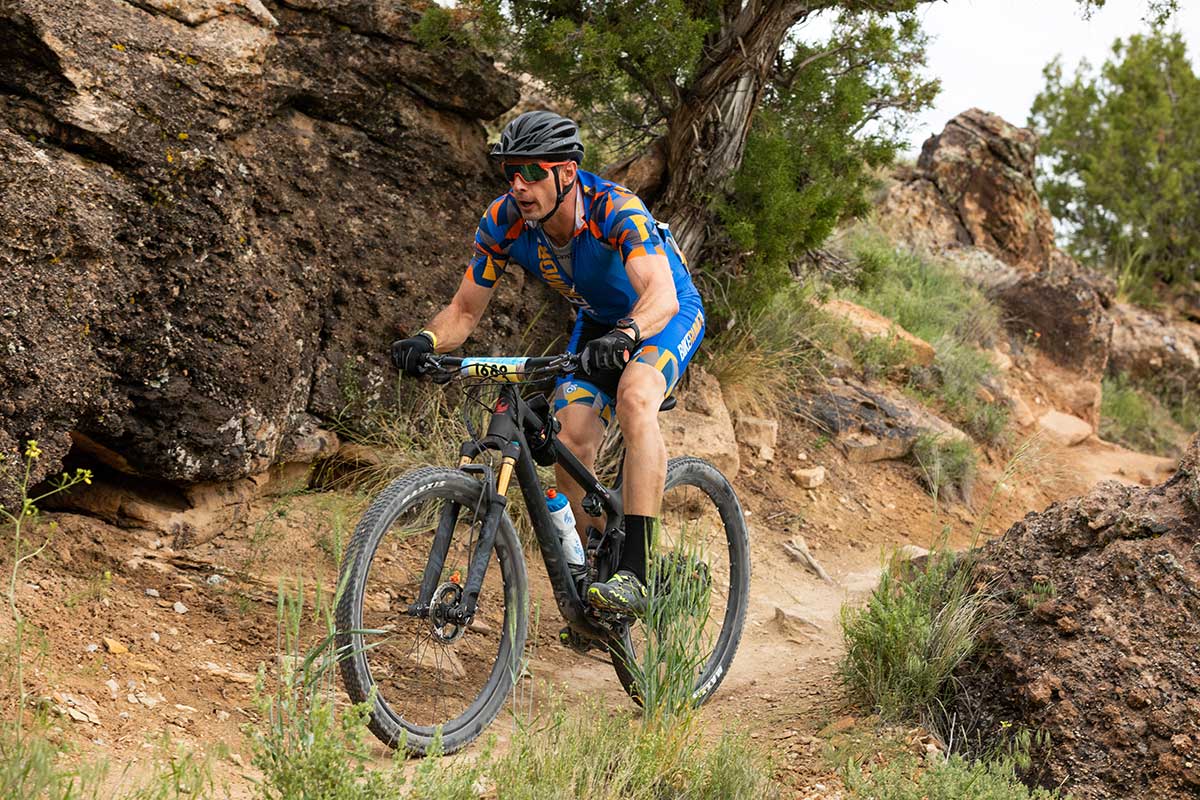To test the all-new Pivot Mach 4 SL, they brought me out to Colorado to race the Grand Junction Offroad epic mountain bike race. We had the option of doing the 15, 30 or 40 mile option, and most of us chose the longest option. Because, why not? We were already there, might as well make the most of it. And we did.
For the two days prior to the race, we put about 33.5 miles on the bike on the Kokopelli and other well-known trails in neighboring Fruita, CO. By the time I got on the plane on Sunday, I had logged a total of ~76 miles aboard the new bike. Here’s how it handled…
It’s all about going Mach speed
The entire point of redesigning the Mach 4 SL was to create the lightest, fastest and most efficient XC race mountain bike Pivot could. They wanted to give their World Cup racers a bike tailor made for modern courses’ growing technical sections and ever-faster competition.
For that level of racers there’s the World Cup models with a shorter travel Fox 32 SC fork and no dropper. For the rest of us, who can afford a little extra weight in favor of more capability and comfort, all other models get the Fox 34 SC lightweight trail fork with 120mm travel. Turns out, that makes for a great XC race fork, too, that helped tame the aggressive rock drops and chunk littered through the GJO course.
With a slacker front end than I’m used to on a pure XC bike, it took the better part of Day One to get a handle on the steering. The bike wanted to push wide until I recalibrated my approaches and put more weight on the front end. Which is where the shorter 44mm offset fork helps, keeping the front axle ever so slightly closer to my center of gravity.
This offset number creates a bit more trail, which made the bike super stable at speed. We had a LOT of opportunity to go really fast. The Kessel Run trail lives up to the name with a blazing quick descent that crisscrosses a gulley in the most amazing way. Fortunately, I could still maneuver the bike around tighter corners, too.
The one area where that slack front end didn’t shine was on really steep, slow climbs. You know the kind I’m taking about. They’re also affectionately known as death marches. The ones where my GPS computer pauses occasionally because it thinks I’ve stopped. Wrooong, GPS, I’m just going really slow. On these, I had to work to keep the front wheel from wandering. It wasn’t terrible. We’re not taking enduro-bike levels of flop, but it’s there. Obviously the solution is to just go faster.
The rear end is short, which helped me maintain good traction on the climbs, whether seated or standing.
How about that suspension?
Traction also comes from the rear tire staying planted on the ground, and the DW-Link suspension worked great. It also shines at bigger, square-edge hits. Slam into a rough section or a small step-up, root or rock, and the bike does a great job of maintaining momentum. There’s no sense that the rear wheel gets hung up, which is good, because that also helped me maintain a smoother pedal stroke when powering through such things.
There’s no denying the added benefit of Fox Live Valve, either. Check out the Mach 4 SL launch coverage for more tech details on that, where I explain how and why it’s tuned on this bike. That system really and truly works as advertised, and for pure racers, it’s worth considering. Basically, it provides automatic switching to Open mode when you hit a bump, and it does so faster than you can notice it working…it just works. The rest of the time it maintains a very efficient, firm pedaling platform.
But does it really need Live Valve?
Well, that’s the tricky part. I didn’t get a chance to ride a Mach 4 SL without it. But generally speaking, Pivot’s bikes have been very efficient, and I rode the prior Mach 429 SL. Functionally, while the frame looks radically different and the rear shock has a different layout, at the heart of it is a very similar DW-Link design. This new version has a better method of pushing the shock, and it’s unlikely that things would be worse than before. But I can’t really comment on how the bike would ride in a “normal” firm or trail mode.
However, I can say this: Even with Live Valve turned off, leaving the shock wide open (and more open than the non-Live Valve shock’s open mode), it still pedals along quite well. Which is good because a) it means the bike won’t wallow in its travel and suck up all your energy if you leave it in open mode, and b) you don’t really need to clutter up your cockpit with a remote lockout if you don’t want to. That said, racers will probably still want a remote lockout, because that shock’s inverted installation and low placement means you won’t really want to try to reach down and manually flip a lever while racing.
I’ve requested a long term test bike without Live Valve, because I want to see the difference. It is a very expensive ($1,900!) upgrade option. So, stay tuned for that.
Is it all sunshine and lollipops?
Well, it would seem that way, wouldn’t it? 76 miles is more than we typical get on a mountain bike at launch events, and given the race environment, all of the attending journalists and Pivot’s staff pushed the bikes as hard as we could. Not a single bike had any issue, and I’m not sure there was even so much as a flat. My bike had zero creaks, everything performed flawlessly. Well, except the gear strap that came loose during the race and almost dangled my spare tube into my rear wheel. I hate those things…saddle bags FTW. (And while we’re on it, at least on the XL frames, depending on seatpost height, I could get away with a medium saddle bag and still have tire clearance with the dropper fully dropped and rear suspension fully compressed. Your results may vary.)
Final thoughts on the new Mach 4 SL?
The low standover height, abundance of bottle cage mounting positions, and much improved aesthetics left me wanting for nothing. And it’s light, which earns a lot of brownie points from me.
The one thing lacking on our test trails was good East Coast forests and their dense tree cover and tighter turns. I spent a few weeks riding the old 429 SL a couple years ago, and with its stock 120mm fork, the handling was a tad slow on our Greensboro, NC, singletrack. Once I switched it to a 100mm fork, the bike came to life. But out west, the 120mm was the way to go. Which is another reason I want to get the long term test bike in…we’ll see how that high speed geo works when picking my way around our local trails. Maybe I’ll put a 100mm fork back on there…
In the meantime, check Pivot’s website for their demo schedule to try the new bike for yourself.
For all the tech specs, check out the original launch coverage, or just enjoy the video!
